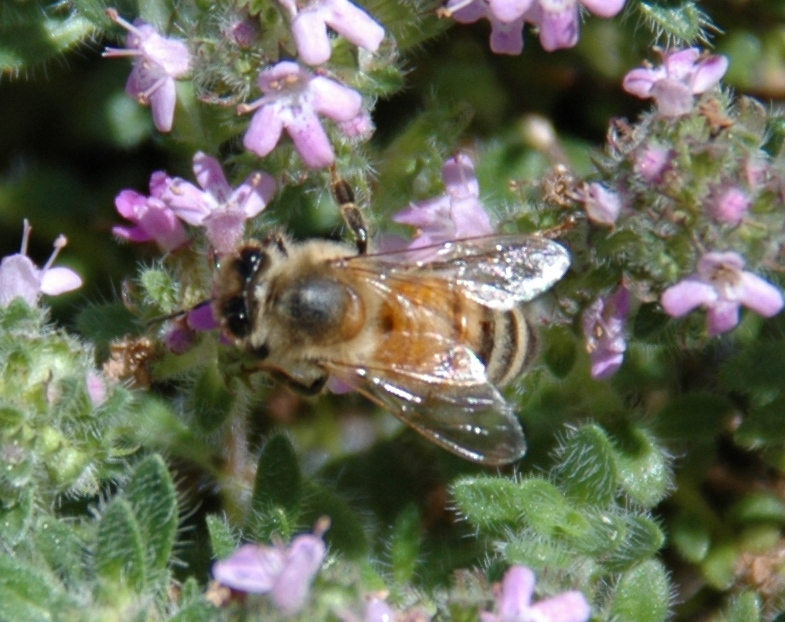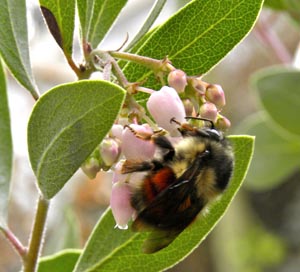Bee Patches are simply a place (large or small) for bees to find water, nourishment, and nesting in an environment free from pesticides. Some patches are as simple as a 3-foot by 3-foot patch of plantings near a drip irrigator--others are hedgerows designed to support habitat and protect water courses from runoff. And a Bee Patch is also everything in between! So here is all about making a bee patch. HANDY GUIDE OF STEP-BY-STEP PLANTING PLANNING!
How To Make A Bee Patch
Here are some preliminary tips to making your bee patch. Knowing your inhabitants helps, just like inviting a guest over for dinner, you’ll want to know what bees like to eat. What will make your guest comfortable? Recognizing what attracts bees is very important too.
Since 2006 when Colony Collapse Disorder (otherwise known as CCD) was first talked about scientist and researchers have started to spend a lot of time and resources to learn about these fascinating little creatures. We have learned that many native bees and honeybees practice “flower fidelity” foraging on one plant species at a time. Take for instance when an apple tree blooms a bee can easily recognize it because of the mass amount of white flowers. It’s like a neon sign with a big arrow saying Come Forage Here!
So plan to plant in large 3 feet by 3 feet patches using the same bloom color. You’ll be helping the bees to find your patch and reduce the distance each bee will need to fly from flower to flower.
Food
All bees enjoy and need nectar (a sugary secretion) to live. Bees create “bee bread,” a combination of nectar and pollen (protein source) that they feed to their young. Bee bread is made by combining both nectar and pollen and is placed inside the brood cell for the larvae (baby bee) to feed on. To gather these important ingredients a bee flys out of her nest looking for flowers. The flower gives off a fragrant scent along with its color to attract the bee. Nectar is found deep within the base of a flower. Flowers will have “nectar guides,” concentric circles or radiating lines that act as target directional signals pointing the bee to where she will find nectar. These signals disappear after a flower has been pollinated and no longer is producing nectar.
Bees gather nectar and pollen as they visit each flower. When the bee lands on the flower her body has a positive charge (from flying through the air) and the flower has a negative charge (both the earth and flowers hold negative charges), this creates an electrostatic charge between the flower and the bee. As she wonders around the flower looking for nectar, her body rubs up against the flowers stamen, the part of the flower that holds the anther. The anther produces pollen. As the bee moves around the flower seeking nectar she is gathering pollen onto the tiny hairs of her body due to the electrostatic charge. While wandering, she inadvertently rubs pollen onto the flowers pistil. Within the pistil is a sticky or feathery tip called the stigma. By releasing pollen onto the stigma this germinates the flower, fertilizing the plant to produce a hard seed from which a new flowering plant will grow. In the case of fruit trees these hard seeds can be seen as fruit, which we like to eat! Or in some flowers like a sunflower the hard seed becomes a sunflower seed that we like to munch on! After a bee has visited a flower the flower becomes temporarily neutralized so that the charge of the visiting flower can be sensed by the next bee looking for nectar and will see that that flower has been visited and will go onto a flower who still has nectar. Both the electrostatic charge and the nectar guides inform a bee as to the availability of nectar.
 The bee gathers more pollen from flowers than she releases onto the pistils. Have you ever seen a fly or bee stop and take a moment to comb herself? On a honeybee she will stop and, using her legs, will comb all the pollen left on her body into what beekeepers call “pollen pockets” (scopa) on her rear legs. The pollen pockets act just like a purse and helps her to carry her very important package back to the hive where she will remove the pollen to give to her sister to store inside a brood cell after making it into bee bread.
The bee gathers more pollen from flowers than she releases onto the pistils. Have you ever seen a fly or bee stop and take a moment to comb herself? On a honeybee she will stop and, using her legs, will comb all the pollen left on her body into what beekeepers call “pollen pockets” (scopa) on her rear legs. The pollen pockets act just like a purse and helps her to carry her very important package back to the hive where she will remove the pollen to give to her sister to store inside a brood cell after making it into bee bread.
Just like we enjoy a good meal each day so do bees. We are lucky we can go to the grocery store any day of the week, every month of the year and find the foods we enjoy and as long as we have the money to buy that food we can have it. But a bee that has no protection from the change in weather, for example, cannot go out when it’s raining or if the wind is too strong or it is just too cold during the day--and remember they also don’t fly at night! So you can see a bee has a lot of restrictions before she gets to go to the market. Add to this, plants have their own restrictions. During drought years, such as the last several years here in California, plants aren’t able to produce nectar if they don’t have water! And plants usually do not flower all year long. So to be a good bee steward we want to consider choosing plants for our bee patch that will span every season. That way when a bee does get to go foraging she will find food available all year long.
Water
Along with nectar all bees need clean water. Honeybees drink water and bring it back to the hive to feed to their queen who doesn’t leave the hive, and to help cool the hive effectively during very warm days making the water into air conditioning. Adding a water feature as simple as adding a pie plate with a mound of pebbles on it to keep the bees from drowning, placed under a drip emitter will provide a constant refill of water that the bees will come back to. If the water dries up the bees will move on – so keep it full!
Nesting
Honeybees vs. Native bees
Honeybees are “social” in that they create a colony of bees with as few as 3,000 to more than 60,000 bees living together in one hive. Native bees tend to be “solitary” bees. Some share a nesting site up to 200 females but many will only share the entrance and create their own brood cells. So you can see the vast difference in housing requirements. Female solitary bees have amazing engineering skills, going to extraordinary lengths to construct a secure nest. About 30% of solitary bee species use abandoned beetle burrows or other tunnels in “snags” (dead or dying standing trees). We can recreate these nests by drilling holes in wood blocks and hanging them on a post or tree, to entice the native bee to nest. Alternatively, they may chew out a nest within the soft central pith of stems and twigs. We can mimic these burrows by bundling straws together and laying them on their side to create a nest environment.
The remaining 70% of native bees nest in the ground, digging tunnels in bare or sparsely vegetated well-drained soil. Refraining from using mulch in the bee patch allows for these ground-burrowing bees to build their home among the patches of plants.
Warning
Not all flowers are friendly to bees (such as Rhododendron or Oleanders). The nectar of some plants can be dangerous to bees. That’s why it is important to choose plants that are labeled “bee friendly.”
Avoid using herbicides and pesticides; those marked “organic” are not necessarily safe for bees! Unfortunately “big box” nurseries sell many plants and seeds that have been chemically treated, which can be harmful to bees. Going to your local independent nurseries and asking for “non-treated” varieties will prevent you from mistakenly adding plants that can be toxic to bees.
TIP RECAP:
- Plan to plant in large 3 feet by 3 feet patches using the same bloom color.
- Plant for seasonal bloom.
- Plant “bee friendly” plants.
- Add a water feature with a large mound of pebbles on it to prevent bees drowning.
- No mulch!
- Keep from obtaining plants pretreated with chemicals.
HANDY GUIDE OF STEP-BY-STEP PLANTING PLANNING!
Websites to help inspire:
The Melissa Bee Garden http://www.themelissagarden.com/album.html
UC Berkeley Urban Bee Lab http://www.helpabee.org/building-bee-condos.html
The Great Sunflower Project http://www.greatsunflower.org/
air-jordan-4-retro-cement-x-new-era-chicago-bulls-sneaker-hook-up-hat | Air Jordan Release Dates 2021 + 2022 Updated , IetpShops , nike new arrival for men japan today live full




